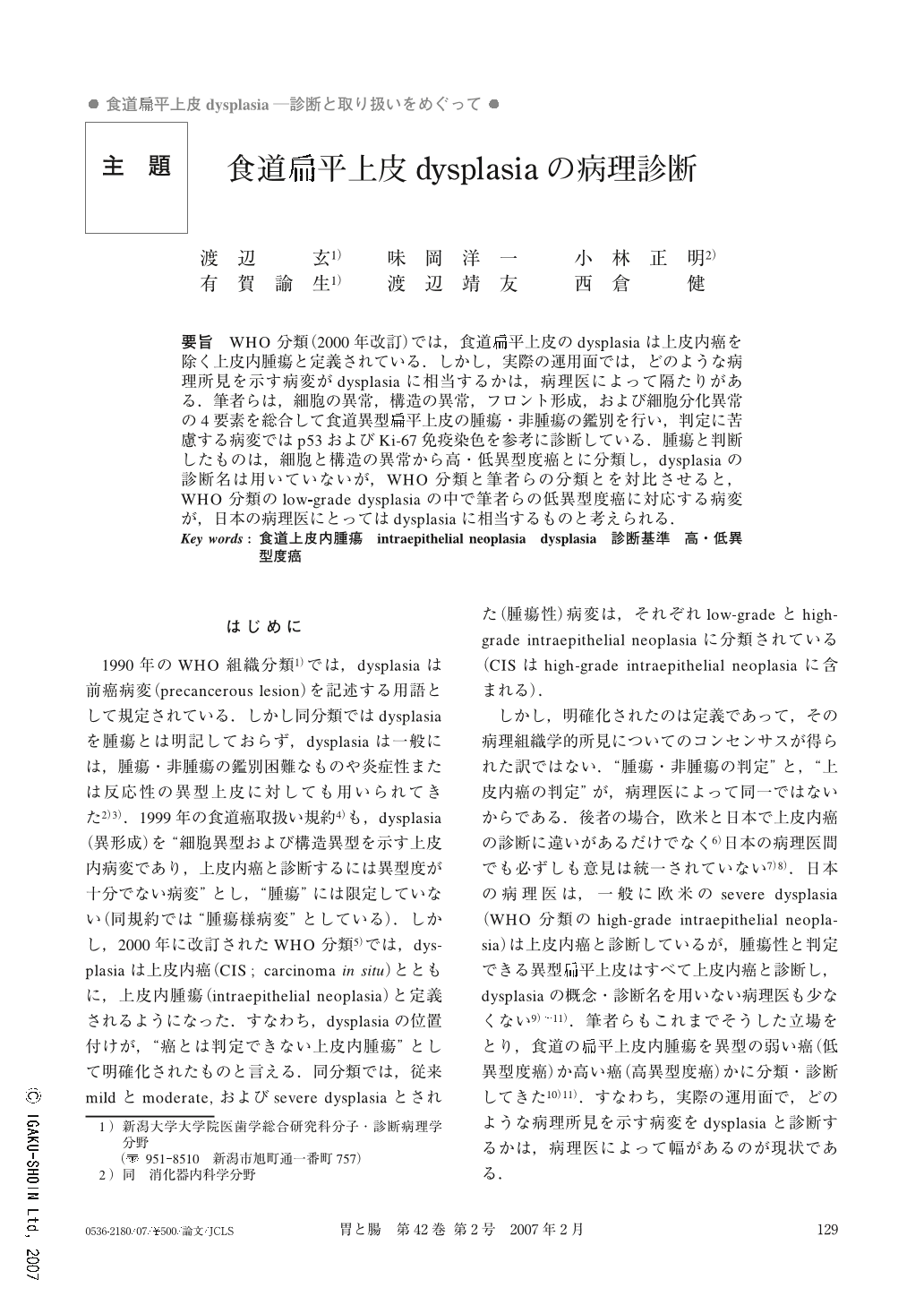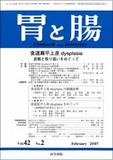Japanese
English
- 有料閲覧
- Abstract 文献概要
- 1ページ目 Look Inside
- 参考文献 Reference
- サイト内被引用 Cited by
要旨 WHO分類(2000年改訂)では,食道扁平上皮のdysplasiaは上皮内癌を除く上皮内腫瘍と定義されている.しかし,実際の運用面では,どのような病理所見を示す病変がdysplasiaに相当するかは,病理医によって隔たりがある.筆者らは,細胞の異常,構造の異常,フロント形成,および細胞分化異常の4要素を総合して食道異型扁平上皮の腫瘍・非腫瘍の鑑別を行い,判定に苦慮する病変ではp53およびKi-67免疫染色を参考に診断している.腫瘍と判断したものは,細胞と構造の異常から高・低異型度癌とに分類し,dysplasiaの診断名は用いていないが,WHO分類と筆者らの分類とを対比させると,WHO分類のlow-grade dysplasiaの中で筆者らの低異型度癌に対応する病変が,日本の病理医にとってはdysplasiaに相当するものと考えられる.
According to the WHO classification revised in the year 2000, "dysplasia" of esophageal squamous epithelium is defined as intraepithelial neoplasia exclusive of carcinoma in situ (CIS). Although the definition of dysplasia is clear, histological diagnosis of dysplasia by pathologists has a wide spectrum. We make a diagnosis of squamous intraepithelial neoplasia of the esophagus by cytologic and architectural abnormalities, front formation, and abnormality in cell maturation. Results of p53 and Ki-67 immunostainings are helpful for making diagnosis of difficult cases. In our diagnostic system, intraepithelial neoplasia is classified into carcinoma with low-grade and high-grade atypia, and we do not use the diagnostic term "dysplasia". However, when we make a comparison between the WHO classification and our diagnostic system, it is thought that a proportion of low-grade dysplasia according to WHO which corresponds to the low-grade carcinoma of our system may be diagnosed as dysplasia by Japanese pathologists.

Copyright © 2007, Igaku-Shoin Ltd. All rights reserved.


